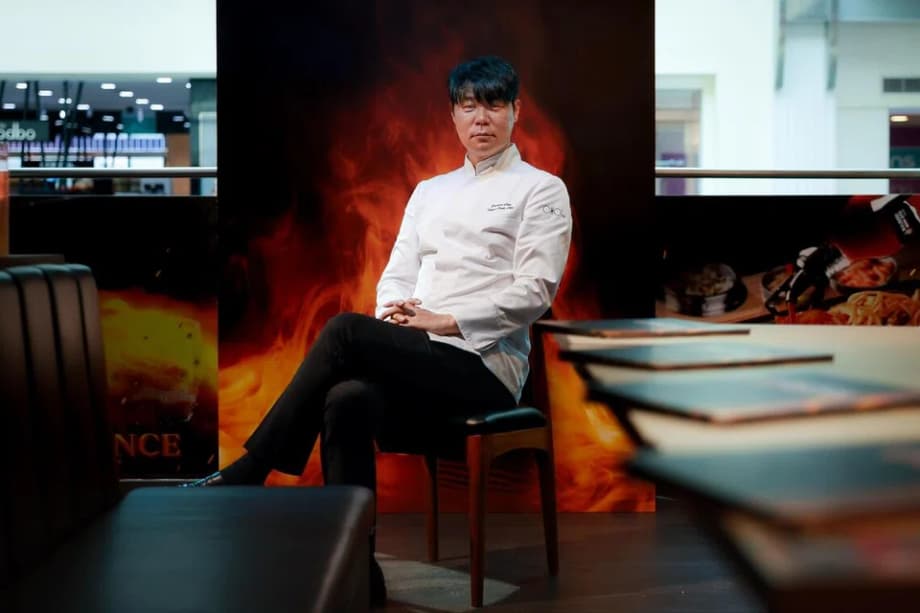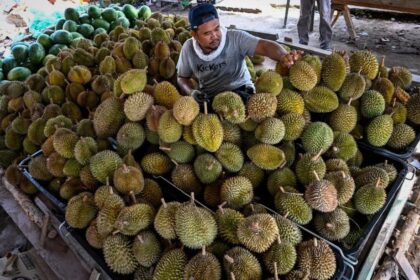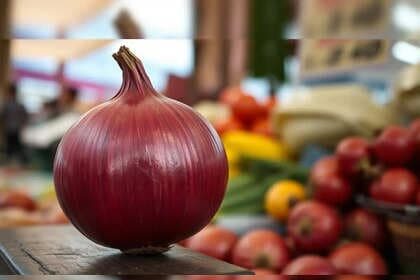A chef at center stage in a global Korean food moment
Choi Hyun-seok has become a vivid symbol of Korean cuisine’s international moment. The chef, instantly recognizable at 1.9 meters tall with a straight-backed posture and an easy half smirk, carries a presence shaped by years in front of television cameras. That charisma now meets a broader audience far beyond Seoul. His turns on popular streaming shows have lifted him from national fame to global attention, while his latest collaboration brings a taste of his ideas to Singapore diners. In September, he visited Singapore to launch a special menu with the Korean grill restaurant chain Bulgogi Syo, extending his creative approach to a new wave of fans.
- A chef at center stage in a global Korean food moment
- What propelled Korean cuisine to the world stage?
- Inside Choi Hyun-seok’s culinary playbook
- From screen to service: how TV changed the dining room
- Why Korean flavors travel so well
- Singapore spotlight: what diners can expect at Bulgogi Syo
- Beyond fame, building a lasting culinary culture
- Challenges on the global menu
- The Bottom Line
Choi’s stage persona can be larger than life, yet his cooking philosophy remains grounded. He has said he does not enjoy following the crowd and, in a personal twist, he admits he is scared of very spicy food. That detail challenges stereotypes about Korean food being all heat, and it hints at how he builds dishes with layers of flavor rather than simply fire. His goal is to reinterpret tradition with invention, and to make fine dining feel inviting for regular diners. As Korean culture surges internationally, his brand of hospitality is reaching audiences who may be discovering kimchi, gochujang and a modern Korean table for the first time.
What propelled Korean cuisine to the world stage?
The global rise of Korean food connects to a larger cultural wave. Music, television dramas, films and fashion have given people a window into Korean life, and food is often the most approachable entry point. Social media shares, street food clips and recipe videos help turn curiosity into cravings. Diaspora communities build local demand and restaurants respond, from barbecue specialists to neighborhood spots serving soups, stews and noodles. Streaming platforms act as powerful amplifiers. Viewers now watch chefs cook with the same intensity they bring to binge-worthy dramas, then go looking for those flavors in their own cities.
That momentum accelerated with Netflix’s hit competition series Culinary Class Wars, which debuted in September and quickly amassed more than 17.5 million views. The show ranked as the most watched non English series globally for two consecutive weeks. Chefs who competed saw reservations spike, and dishes that stole the spotlight on screen started appearing on restaurant menus, meal kits and packaged products. The series resonated strongly in Korea, Taiwan, Singapore and Hong Kong, and it pushed many viewers to experience Korean flavors at their local restaurants.
What the spoon metaphor means
Part of the show’s pull comes from a theme deeply familiar to Korean audiences. In Korean society, the term spoon is a metaphor for background and opportunity. Gold, silver or diamond spoons represent privilege. A black spoon signals a tougher starting point. Culinary Class Wars adopts that language to pit white spoons, established chefs with reputations and resources, against black spoons, talented cooks without the same advantages. The contest is framed as a fight for recognition and a fair shot at success.
That set up struck a nerve. A black spoon competitor, Kwon Seong-joon, won the series, a result that underscored the idea that skill can triumph over status. The narrative mirrored broader conversations about inequality and social mobility. It made the show more than an entertainment product. According to judges and chefs involved, the production promised to respect craft, not reduce cooking to gimmicks. That approach helped shape public perception, turning culinary skill, training and restaurant work into subjects of mainstream interest and pride.
Inside Choi Hyun-seok’s culinary playbook
Choi has spent years building a style that mixes technique, humor and surprise. He is comfortable in front of the camera, yet he treats the kitchen as a serious stage. He prefers not to chase trends, even as he embraces modern presentations. The result is a point of view that values flavor first, then invites diners to have fun with the experience. On television he delivers drama. In the dining room he focuses on precise cooking and balance.
In Seoul, Choi leads several restaurants, including Choi Dot, Central Reducer and Dahlia Dining. Each venue explores a different expression of Korean cooking, merging classic ingredients with contemporary methods. He has said he wants fine dining to feel accessible, and that mindset shapes both his menus and collaborations. His food aims to be memorable but not intimidating, so first-time guests can enjoy it without feeling they need a guidebook at the table.
Signature dishes and techniques
The collaboration with Bulgogi Syo in Singapore, titled Memories on a Plate, distills Choi’s approach into four dishes that draw on his television appearances and restaurant repertoire. Vongole sujebi takes hand torn wheat dough noodles and steeps them in a rich clam broth tinted with squid ink. It reads like an Italian-Korean conversation in a bowl. A second dish, Jang trio with Omugi beef tenderloin, layers seared beef with a trio of fermented sauces, including aged doenjang butter and gochujang sauce, alongside pickled radish accented with truffle. The dish is a study in umami and acidity, with beef acting as the canvas. Fresh Omugi beef yukhoe sotbap places seasoned raw beef over layered rice and vegetables cooked in a small pot. The final option, Maeun dwaeji galbi jjim with triple cheese risotto or spicy pork stew, pairs a comforting pork braise with creamy risotto to bridge two comfort food traditions in one plate.
Several ingredients may be new to some diners. Sujebi is a homey noodle made by tearing dough by hand into broth. Doenjang is a deep flavored fermented soybean paste used in stews and sauces. Gochujang is a fermented chili paste that adds sweetness, spice and savory notes. Yukhoe is Korean seasoned raw beef, often served with pear and egg yolk. Sotbap refers to rice cooked in an individual pot that develops flavorful crust and texture. Jang is the umbrella term for Korea’s family of fermented sauces. Choi’s favorite dish in this set, a Daegu style risotto, blends creamy rice with Korean aromatics for a gentle yet rich profile. Since he does not prefer extreme heat, he tends to build complexity with fermentation, aromatics and gentle spice rather than blunt intensity.
From screen to service: how TV changed the dining room
Culinary Class Wars has turned chefs into household names and sent diners on a hunt for the plates they watched on screen. In the run up to the finale, released on October 8, restaurants across the region reported booked calendars and a jump in social buzz. Many featured dishes from the show as specials or permanent items. For many viewers, booking a table felt like extending the storyline. They could taste a dish they had just seen and decide for themselves how it stood up to the judges’ reactions.
Contestants across the spectrum experienced the boost. Finalist Kang Seung-won, known by fans as Triple Star, joined the show during a rough patch for his business. After the episodes aired, reservations filled up and his profile rose. Kim Taesung’s casual spot Pono Buono also benefited, proof that interest reached beyond high end dining. The program widened curiosity about the restaurant industry. It highlighted the craft and stress that sit behind every plate, from prep work to service.
For Choi, the exposure helped bring diners back after the pandemic era lull. The series reminded guests why eating out can feel exciting, and it reintroduced the energy of a bustling dining room. With his restaurants busier, he could extend opportunities to teams and suppliers, from young cooks learning new techniques to farms and artisans connected to his menus. The TV spotlight, in other words, turned into real activity at the table.
Why Korean flavors travel so well
Korean cuisine often centers on balance. Sweet, sour, salty, spicy and umami are present, but rarely in isolation. Fermentation deepens flavor and creates layers that hold interest. Barbecue gives a gratifying char, stews add warmth and comfort, and banchan, the array of small side dishes, invites exploration. The style of eating is social. Food arrives for sharing. That makes it easy for curious diners to sample a little of everything and return to the dishes they love.
Access to ingredients has expanded. Gochujang now sits on supermarket shelves far from Seoul. Doenjang and Korean soy sauce are easier to find. Seaweed, perilla, rice cakes and glass noodles are common in specialty stores. Chefs in major cities can create Korean inspired menus without long waits for supplies. From barbecue joints to tasting menu rooms, the range of dining formats helps the cuisine adapt to each market while preserving a Korean heart.
Chefs like Choi help bridge that spectrum. He can cook a course meal that winks at Italian technique and still be unmistakably Korean. He can also translate a TV sensation into a casual plate that tastes familiar on a first bite. That flexibility keeps the cuisine moving forward, responsive to local tastes while maintaining a connection to tradition.
Singapore spotlight: what diners can expect at Bulgogi Syo
The Bulgogi Syo collaboration gives Singapore diners a direct line to Choi’s ideas. He curated the menu to appeal to both local and international palates, with dishes that show depth without leaning too hard on heat. The presentations feel modern, yet the flavors come from techniques and ingredients that have been part of Korean kitchens for generations. The partnership also fits Bulgogi Syo’s style, which prioritizes lively grill flavors and approachable plates.
Each of the four dishes tells a story. Vongole sujebi leans into shellfish notes and the gentle brine of squid ink, with torn noodles providing chew. The Jang trio with Omugi beef tenderloin is a quick lesson in Korea’s fermented sauces. Aged doenjang butter brings creamy savor, gochujang offers warmth and sweetness, and pickled radish with truffle counters richness with crunch and aroma. Fresh Omugi beef yukhoe sotbap layers seasoned raw beef over rice, highlighting temperature and texture contrasts. Maeun dwaeji galbi jjim with triple cheese risotto or spicy pork stew offers a playful pairing, putting a luxurious risotto next to a proudly Korean braise.
For Singapore diners, the set aligns with local loves: seafood, quality beef, comforting rice and a spectrum of spice. Heat can be adjusted, and the core pleasures, depth and balance, remain. Fans of the Netflix series get an added thrill. They can compare their on screen impressions with the flavors in front of them and carry a bit of the show’s drama into a weeknight dinner.
Beyond fame, building a lasting culinary culture
Choi’s reach goes beyond TV sets and tasting menus. International events, like a sold out pairing dinner with Chilean winery Don Melchor in 2025, show how Korean flavors can sit comfortably next to world class wines and global dining traditions. These collaborations expose new audiences to Korea’s fermented sauces, gentle sweetness and slow-built flavors. They also give wine lovers a fresh way to experience pairings, where gochujang and doenjang meet Cabernet and the balance still holds.
Momentum from television also creates opportunities for mentorship. With more diners seeking out Korean restaurants, there is space for young cooks to train, for suppliers to scale up and for regional specialties to enter the spotlight. If chefs use their visibility to teach and to invest in teams, the current surge can shape a more resilient restaurant ecosystem. That means better jobs, stronger sourcing networks and a deeper bench of culinary talent.
Challenges on the global menu
Scaling Korean cuisine across borders is not simple. Classic flavors depend on fermentation that takes time and careful control. Sourcing consistent quality for staples like gochujang, doenjang, soy sauces, seaweed and premium beef can be tricky in markets with limited supply. Restaurants must decide how far to adapt to local preferences without losing identity. Pricing is sensitive in many cities, and labor remains a pressure point worldwide. Each decision affects both perception and sustainability.
For high profile chefs, there is also the balance between showmanship and substance. Television brings welcome attention, then expectations rise. Chefs like Choi are measured by how well they translate spectacle into lasting hospitality. He has long favored creativity over copying trends. Keeping that promise matters now, when more eyes are on his plates and more diners expect a meal that matches the story that brought them through the door.
The Bottom Line
- Culinary Class Wars drew more than 17.5 million views after its September release and ranked as the most watched non English series for two weeks.
- Choi Hyun-seok’s Singapore collaboration with Bulgogi Syo features a four dish set inspired by his television appearances.
- Menu highlights include Vongole sujebi, Jang trio with Omugi beef tenderloin, Fresh Omugi beef yukhoe sotbap and Maeun dwaeji galbi jjim with triple cheese risotto or spicy pork stew.
- Choi leads several Seoul restaurants, including Choi Dot, Central Reducer and Dahlia Dining.
- The show boosted bookings and public interest in Korean restaurants across the region, benefiting both fine dining and casual spots.
- The spoon metaphor, pairing white spoons against black spoons, resonated with viewers, and a black spoon competitor won the series.
- Choi prefers not to follow trends and often builds depth with fermentation and aromatics rather than intense spice.
- Korean cuisine’s global appeal rests on balanced flavors, sharing culture and a growing availability of key ingredients.












